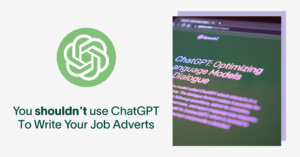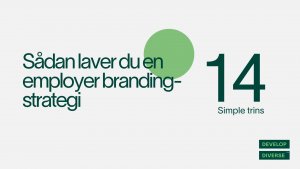When organisations get started with their diversity, equity and inclusion (DEI) strategy, their first port of call is usually unconscious bias training.
It’s a totally logical place to start — because we all need knowledge to help us understand what causes bias at work, and how to be more inclusive towards others.
The problem is, running unconscious bias training alone won’t create a more diverse or inclusive company long-term. This is because whether we’re learning how to play the piano, or become a better leader, retraining how we think and changing habits takes time.
In this post, our CEO and founder Jenifer Clausell Tormos explains the science behind why unconscious bias training doesn’t work, and how to implement learning habits that lead to long-term inclusion and diversity.
Understanding how unconscious bias training works
Unconscious bias training is a form of workplace training designed to help people undo the emotional and behavioural patterns and biases they hold towards other peers and colleagues — ones that operate at an unconscious level.
“Building a culture of inclusion and reducing unconscious bias at your organisation requires a combination of training and a mindset change,” Jenifer explains. “When our brains have been working in a specific way for our entire lifetime, changing our mindset takes more than just one training session.”
Research backs this up. A 2018 study found that regular, consistent training leads to better skill and knowledge retention. Meanwhile, 2019 research shows that unconscious bias training itself doesn’t lead to long-term behavioural change, or address the structural and institutional changes needed to foster inclusion long-term.
“It’s the same idea with therapy,” Jenifer says. “We can’t change our habits or behaviour in a few sessions. Mindset changes need to become embedded at an unconscious level so we automatically start to behave differently. That requires constant training.”
Retraining unconscious bias with continuous learning
So how can you maximise your unconscious bias training and make sure learning continues after it’s over?
Formal training is only one learning process organisations can use to build greater inclusion. But learning happens in all kinds of different formats — and organisations need to leverage as many as possible to ensure awareness and learning continue long-term.
“Creating inclusion long-term requires us to keep learning, continuously and regularly,” Jenifer says. “In-person unconscious bias training has become our status quo, but formal training is only one method of learning.
“Organisations can expose employees to lots of different learning formats, including providing reading materials, setting up employee resource groups, and enabling conversations among colleagues. But one of the most important things to remember is that bias is individual, so giving everyone the same training won’t lead to the same results.”
Few organisations have an unlimited time or budget for training, let alone the resources to make sure that everyone gets the exact learning experience they need. Jenifer says this is where tooling can help.
“Not everyone can learn from the same resources and type of training in the same way. But personalised or tailored micro-training can help here. In our platform, we create micro-nudges for users that help them understand in the moment how and why a word or phrase could be contributing to unconscious bias. Over time, this is a scalable, effective way to shift mindset and reach every person across your organisation.”
Long-term learning leads to long-term inclusion
When building an inclusive company, retraining unconscious bias is a continuous, long-term process that requires you to connect training with mindset change. Unconscious bias is a start, but the real work comes from removing barriers to learning through tooling and processes.
Develop Diverse can help you scale this learning across your organisation by highlighting instances of linguistic bias. In our platform, users can see the impact of their language choices in the moment, and follow micro-nudges that lead to long-term behaviour change. Find out more by booking a demo.





